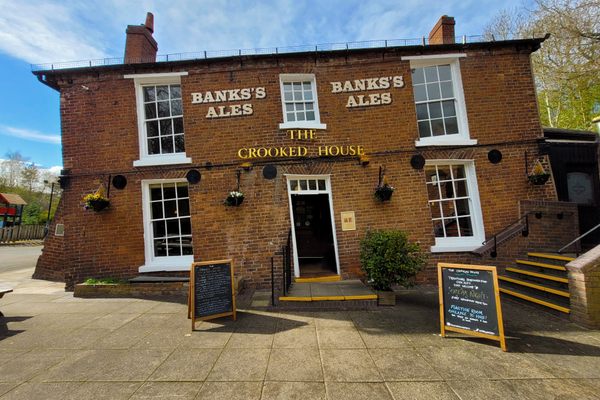Who Invented Eggs Benedict–a Traitor, a Pope, or a Hungover Dude?
You eat brunch today because British fox hunting parties thought it grand.

Eggs Benedict. (Photo: Magdanatka/shutterstock.com)
The most important thing to know about eggs Benedict is that they have nothing to do with the famed traitor Benedict Arnold.
In fact, some give credit for the dish to Pope Benedict XIII, who ruled the Vatican from 1724 to 1730, and was put on a strict eggs and toast diet while there–dressed in a lemon-based sauce, at his request. But it wasn’t eggs Benedict, exactly, and that pope’s ultimate legacy was sartorial, not culinary: he forbade the wearing of wigs by the cardinals.
Pushing aside stories of traitors and popes, it seems the real source of eggs Benedict was New York City in the Gilded Age, an era when rich people were starting to party in public instead of private homes, in plain view of commoners who also liked staying out late and spending money in restaurants.

A dinner at Delmonico’s in 1906. (Photo: Library of Congress/LC-DIG-ds-02966)
This was the era where brunch truly came into its own, and this classic dish was one of the things that helped define it. In general, eggs Benedict features an English muffin, split open, with each side topped with a slice of Canadian bacon, a poached egg, and hollandaise sauce. The magic is in the sauce, which is a whisked-together blend of egg yolks, butter, and lemon.
It is emphatically not a breakfast dish; the proper time to eat eggs Benedict has always been after 10 a.m. Though the tradition of a luxurious mid-morning meal probably comes from British fox hunting parties (the servants would go ahead and have a meal set up in a field for the horseback aristocrats), it hit its stride as the wealthy both moved into urban centers and became aware of the concept of the weekend.
In 1895, the British writer Guy Beringer wrote an impassioned ode in the now-defunct Hunter’s Weekly that both explained and promoted brunch. It was absolutely recommended as a hangover cure: ”Brunch is cheerful, sociable and inciting,” wrote Beringer. ”It is talk-compelling. It puts you in a good temper, it makes you satisfied with yourself and your fellow beings, it sweeps away the worries and cobwebs of the week.”

Delmonico’s, 1893. (Photo: British Library/Public Domain)
Across the pond, American leisure classes were also enjoying the thrills of brunch. There are two Manhattan restaurants closely associated with the Gilded Age, both important to the field of culinary history even apart from the dish in question. Yet each can lay reasonable claim to being the location where eggs Benedict was invented. Let’s look at both arguments.
Some believe that eggs Benedict was cobbled together at Delmonico’s, a restaurant opened in New York by a Swiss family in the 1830s. They had visions of grandeur: they told everyone that the exterior columns of their building were discovered among and imported from Pompeii’s ruins.

A menu from Delmonico’s, c. 1917. (Photo: New York Public Library)
Two of the restaurant’s regular diners in the 1860s, a Mr. and Mrs. LeGrand Benedict, are reported to have requested the elements of eggs Benedict one morning, after which it became a popular off-menu item.
However, a more fun, and perhaps true version gives credit to Lemuel Benedict, a man from a rich family who shamed his people by marrying an opera singer (the scandal of it all!) and drinking at taverns with all manner of hoi polloi. He was also known as a very generous tipper–in other words, he was a man of the people, his elevated status notwithstanding.

A postcard for the Waldorf Astoria Hotel, 1902. (Photo: The New York Public Library)
The story goes that Lemuel went to the Waldorf Hotel one hungover morning in 1894 and asked for “some buttered toast, crisp bacon, two poached eggs, and a hooker of hollandaise sauce.” (A “hooker” is what we now call a “glug” or a “slug.”)
You’ll notice that Lemuel’s requested combination isn’t exactly the same one we know today. Credit for the shift to Canadian bacon is given to Oscar Tschirky, maître d’ at the Waldorf Hotel, who had previously worked at Delmonico’s. He was a bit of an American culinary pioneer, having also created the Waldorf salad and turned Thousand Island dressing, briefly, into an upscale condiment.

Oscar Tschirky, 1885. (Photo: Public Domain)
Now, it only makes sense that the ultimate brunch dish was invented by a hard-partying rogue with money to burn. But Lemuel’s contribution to daytime gluttony might have been forgotten, were it not for his descendent Jack Benedict, a man passionate about his family history who became inflamed by a 1978 Bon Appetit feature that gave credit for eggs Benedict to the Benedict couple (no relation) who frequented Delmonico’s.
Jack made it his later life’s work to reclaim the dish for his family. He opened the L.C. Benedict Restaurant & Tavern in Winter Park, Colorado. He served the eponymous dish two ways: Lemuel’s Way, with toast and bacon, and Oscar’s Way, with English muffin and Canadian bacon.

A 1907 breakfast menu from the Waldorf. (Photo: New York Public Library)
He also tried to partner with McDonald’s, proposing an “Eggs McBenedict”, but apparently the Egg McMuffin was already in the works by the time Jack made contact.
Eggs Benedict took about 100 years to become a brunch classic–a 1984 Christian Science Monitor article about brunch still needed to define the dish–but thanks to the hungover desperation of Lemuel and the dogged campaign of Jack, the Benedict family made a lasting impression on American weekend culture.
We raise our Bellinis to you, Benedicts.
Gastro Obscura covers the world’s most wondrous food and drink.
Sign up for our email, delivered twice a week.
























Follow us on Twitter to get the latest on the world's hidden wonders.
Like us on Facebook to get the latest on the world's hidden wonders.
Follow us on Twitter Like us on Facebook